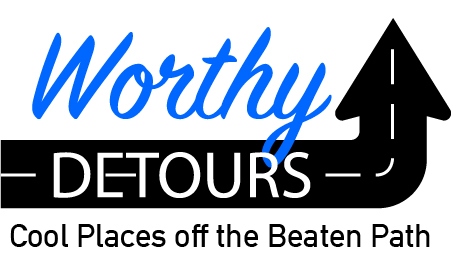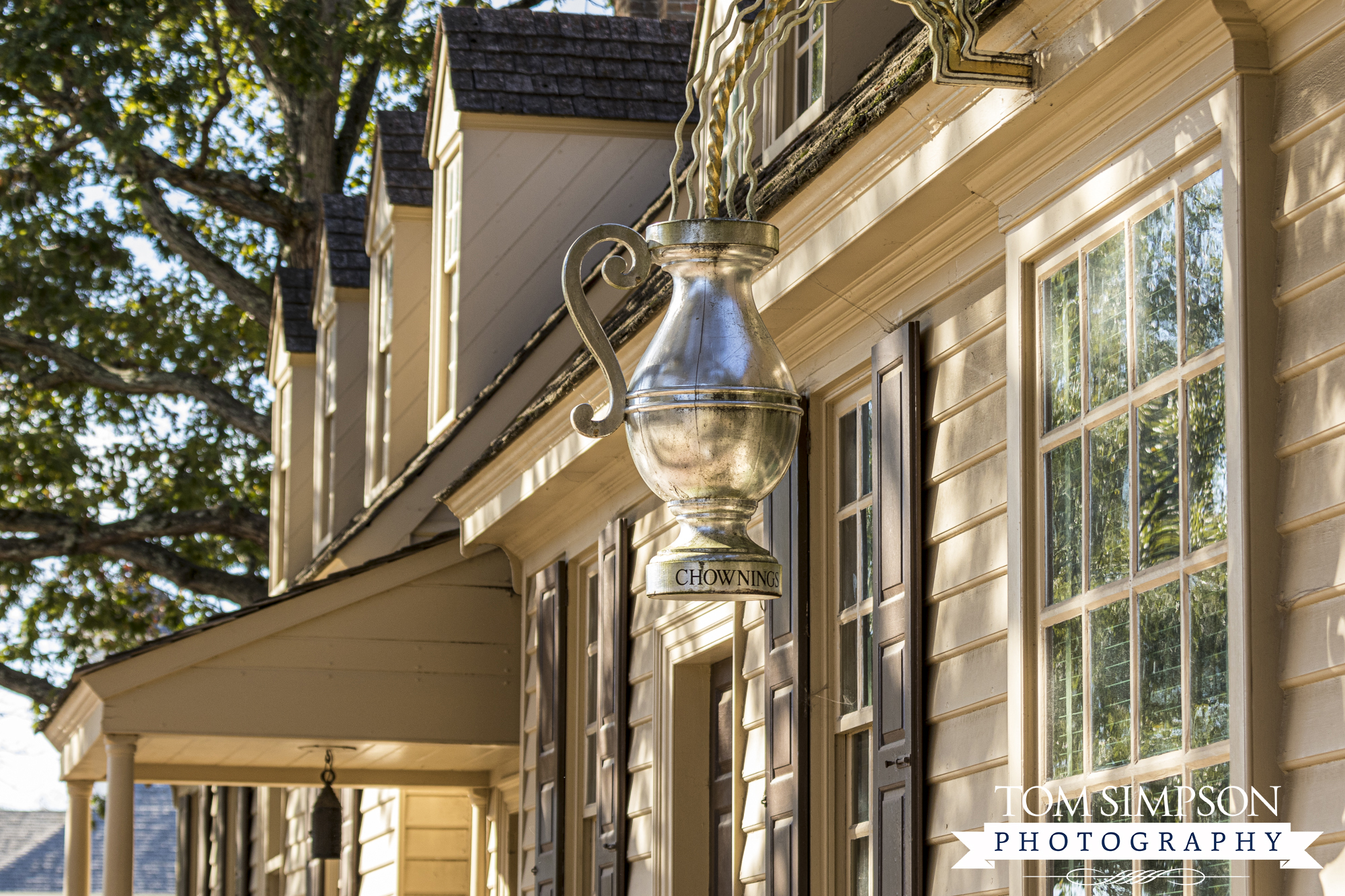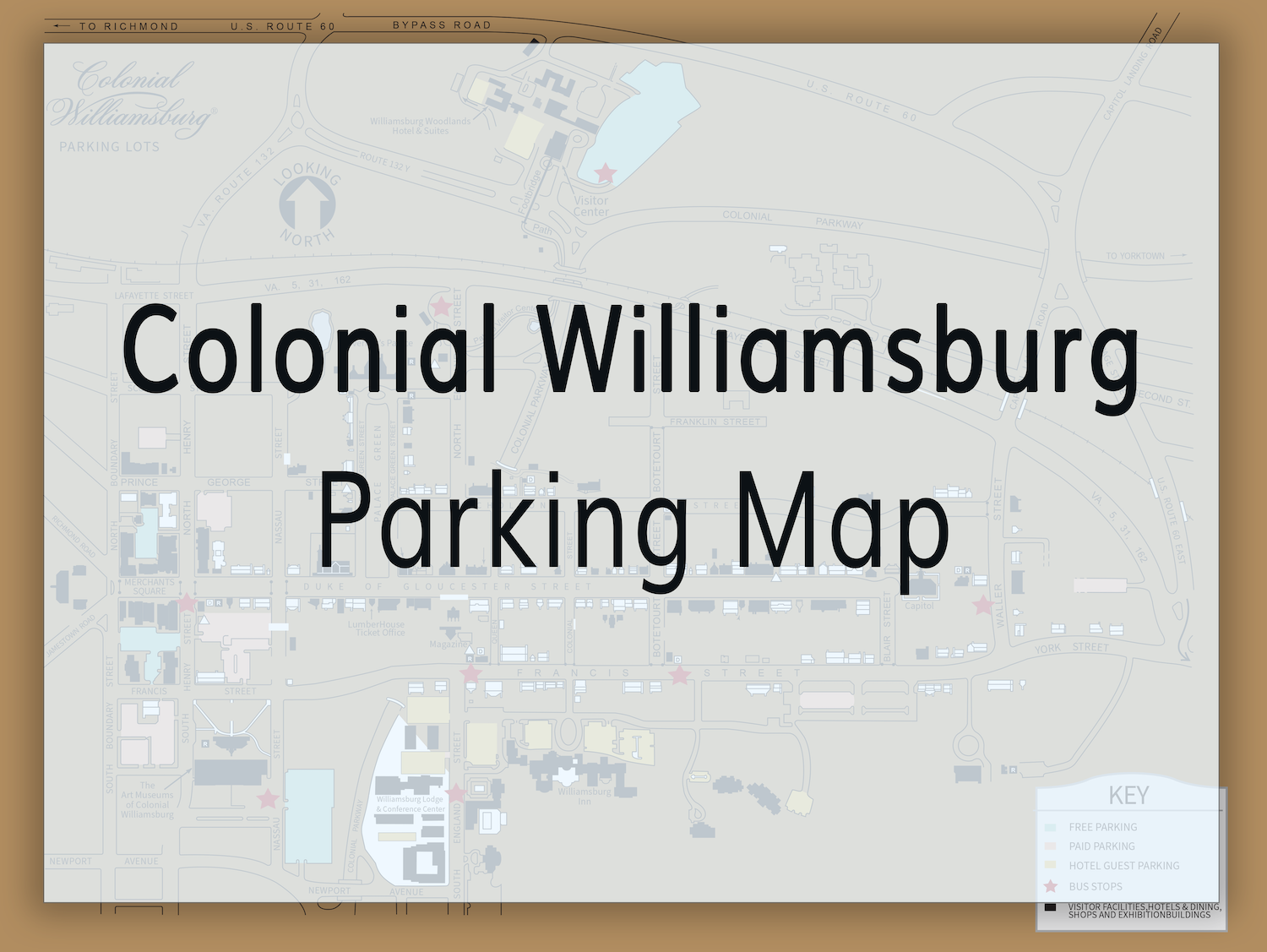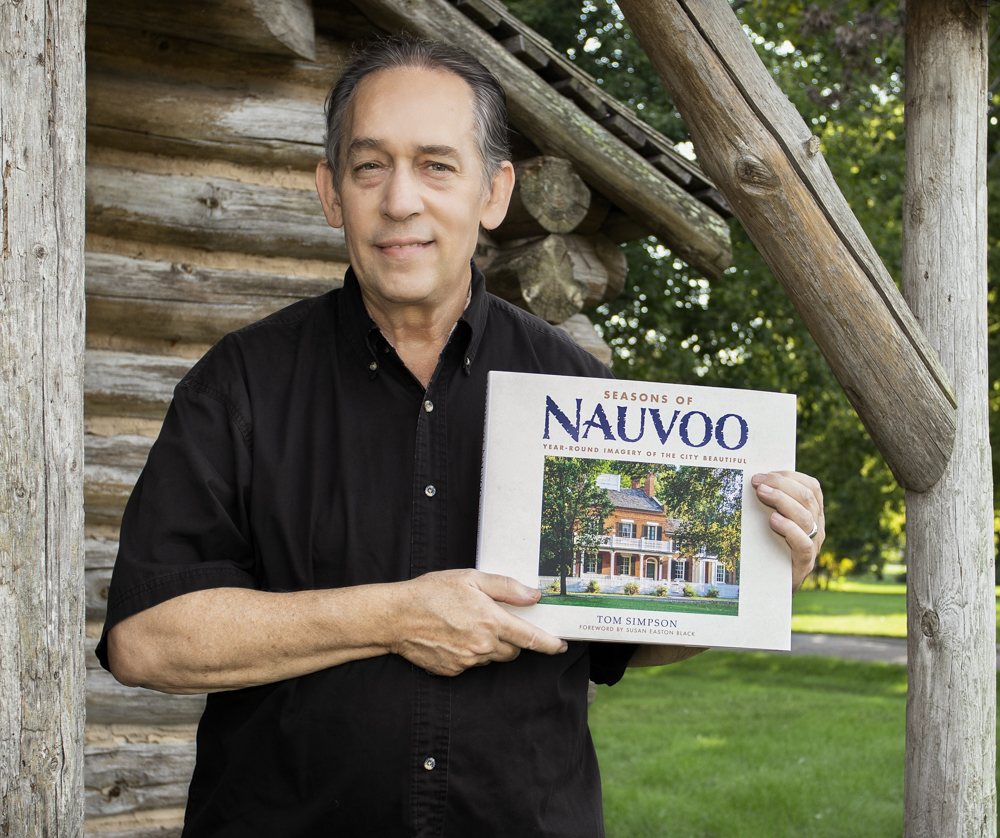What Can You See in a Short Visit to Williamsburg?
Did you know a common misunderstanding about Colonial Williamsburg, Virginia is a short visit isn't worth the time? Not true. But, what can you see in 4-hours? Plenty…and it was worth every minute.
I fell in love with CW years ago during two high school week-long trips. Our last trip to Virginia was for a funeral, not a vacation—but there was no way I was passing through without stopping at my all-time favorite historic site.
There is so much to see and enjoy in the Colonial Williamsburg. If you’re short on time like we were, there are a few great options to make a stop worthwhile.
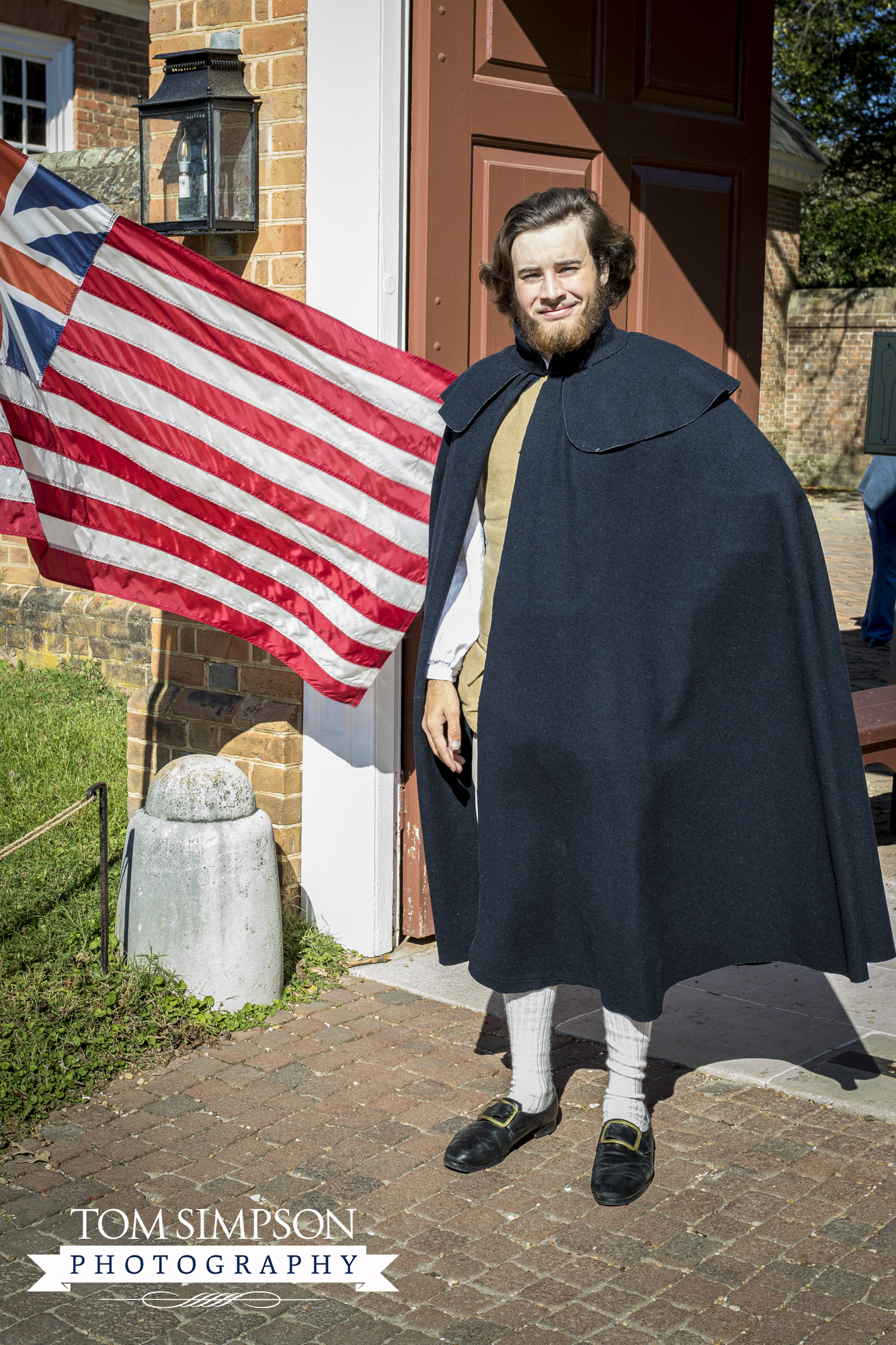
The Grand Union flag, a mix of stripes with the Union Jack, flies outside each building you can enter at no cost.
Visitor's Center:
101 Visitor Center Drive
Williamsburg, VA 23185
Contact:
(888) 965-7254
Hours:
8:45 AM - 5 PM, Daily
Fees:
Historic Area - FREE
Historic Buildings - varies
Website:
ColonialWilliamsburg.org
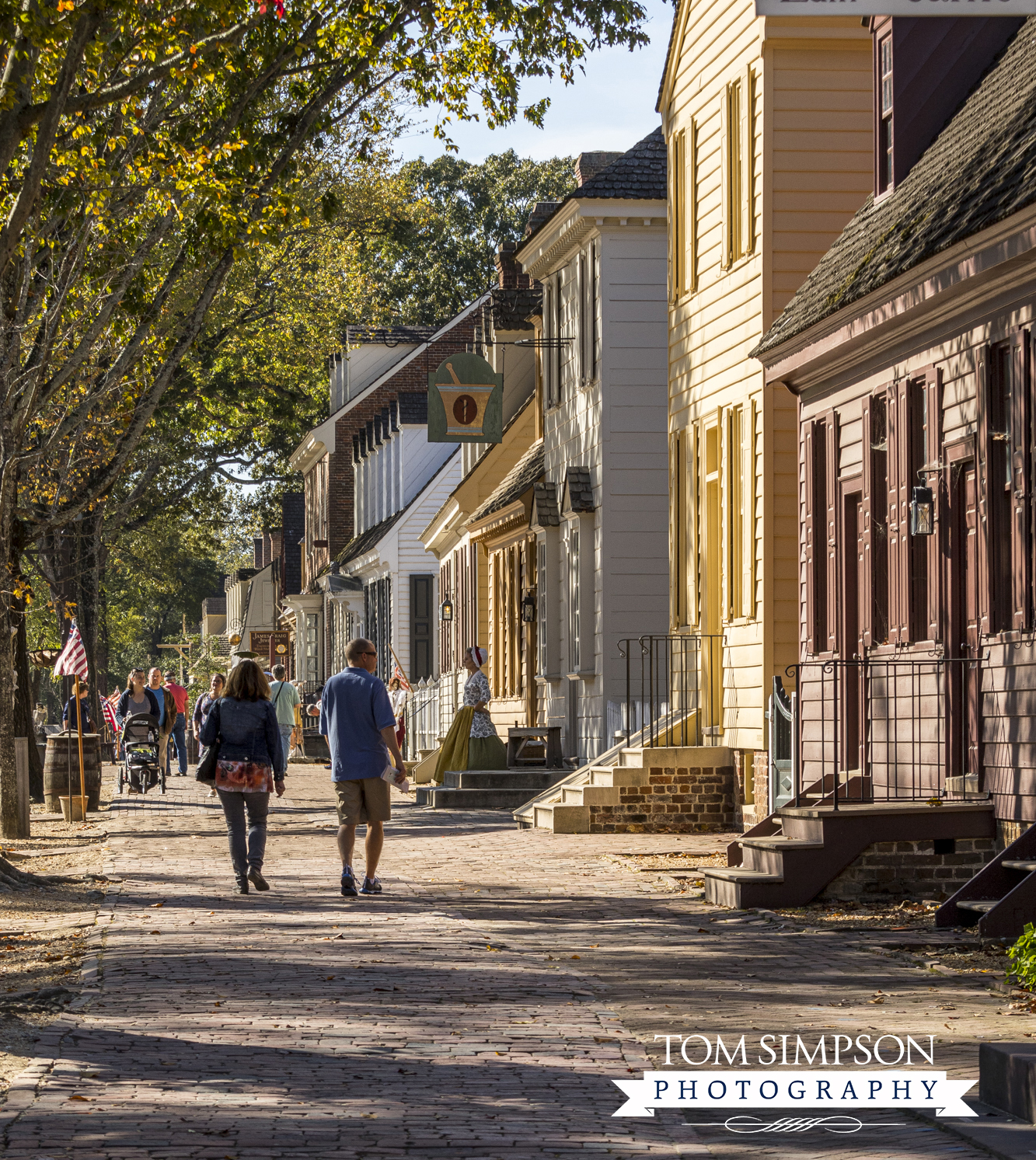
Stroll along cobblestone sidewalks on Duke of Gloucester Street and view colonial architecture.
Stroll the Historic Streets
First, you do not need an admission ticket to go into Colonial Williamsburg. You can stroll up and down the same streets George Washington, Thomas Jefferson, and a host of others walked anytime.
The Duke of Gloucester Street is a pleasant place to walk, both day and evening. Wide cobblestone sidewalks stretch between shops and street adding to an overall feeling that you have transported back in time.
Our visit was a few days before Halloween and decorations were everywhere! Watch for that post in the next few weeks.
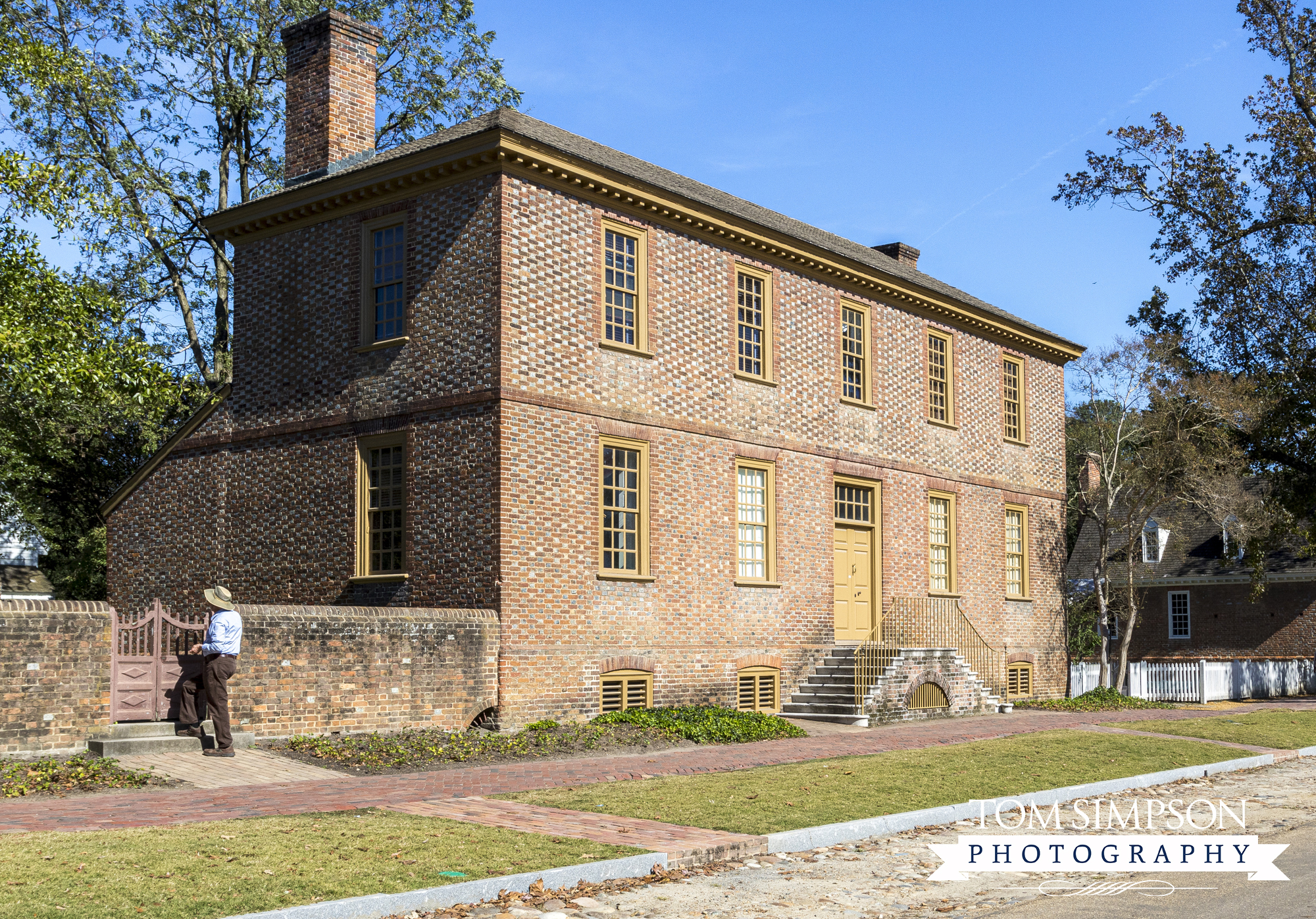
The Ludwell Paradise Home was the 1st property J.D. Rockerfeller, Jr. purchased, launching Colonial Williamsburg's reconstruction.
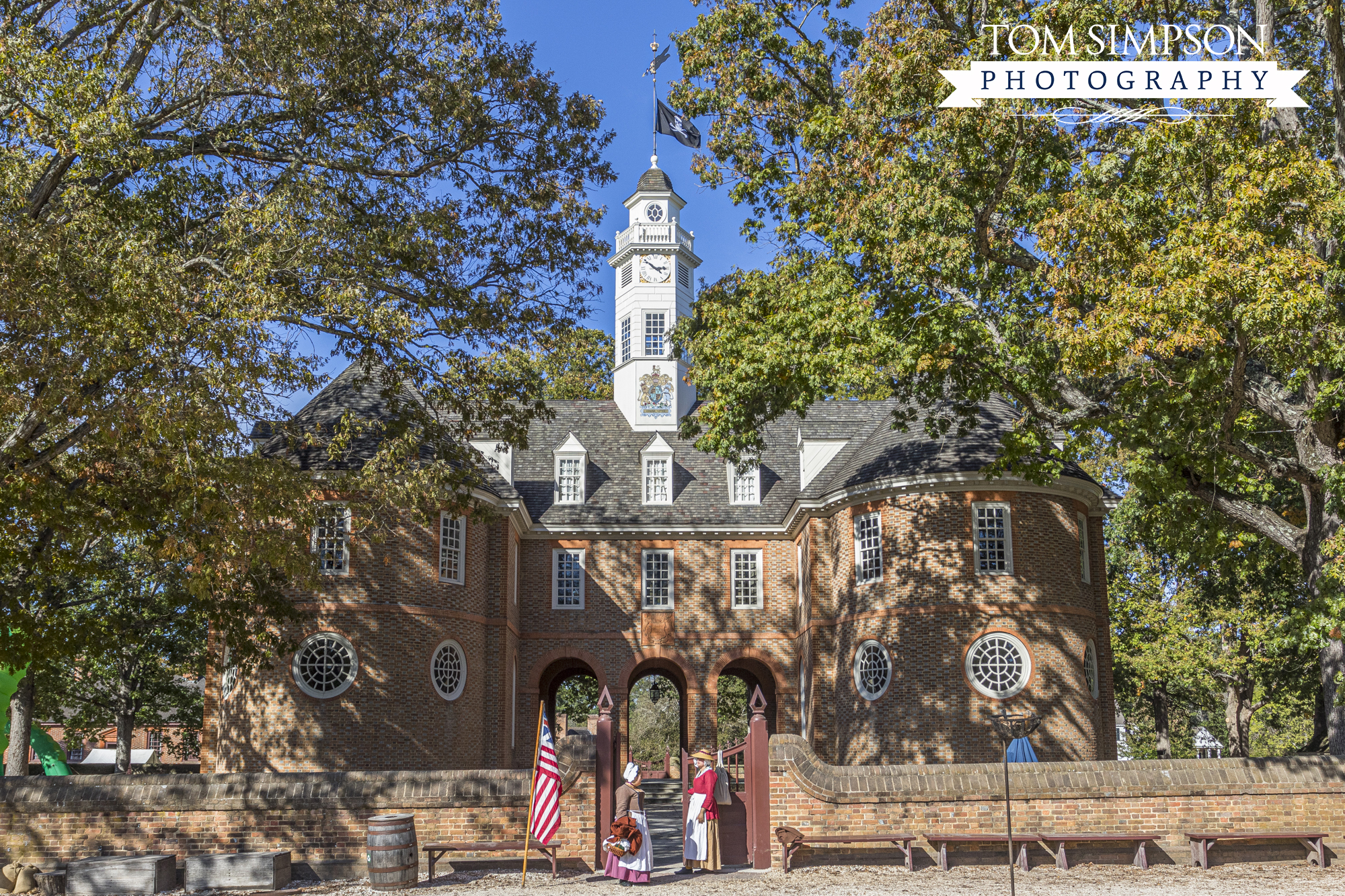
The Capitol, reconstructed on the same site and same style as the original 1705 building.
Historic buildings and shops significant to the period line the mile-long by half-mile wide painstakingly restored area.
Besides colonial architecture, you’ll see guides in period attire and scenes of daily life from the 1700’s.
Sites open to the public have a flag posted outside. Only those with the Grand Union flag are free to enter.
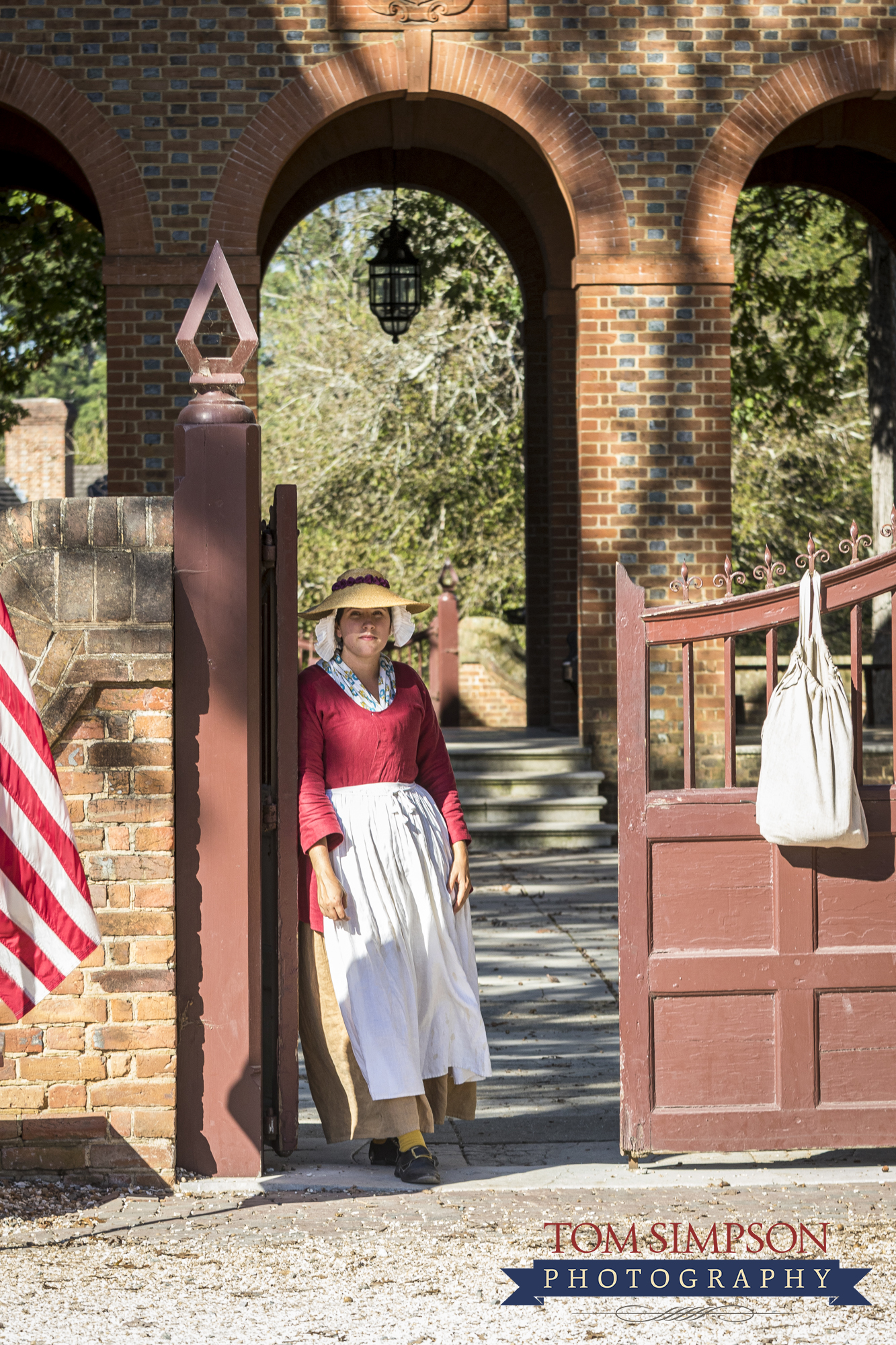
Guides greet visitors at the Capitol grounds entrance.
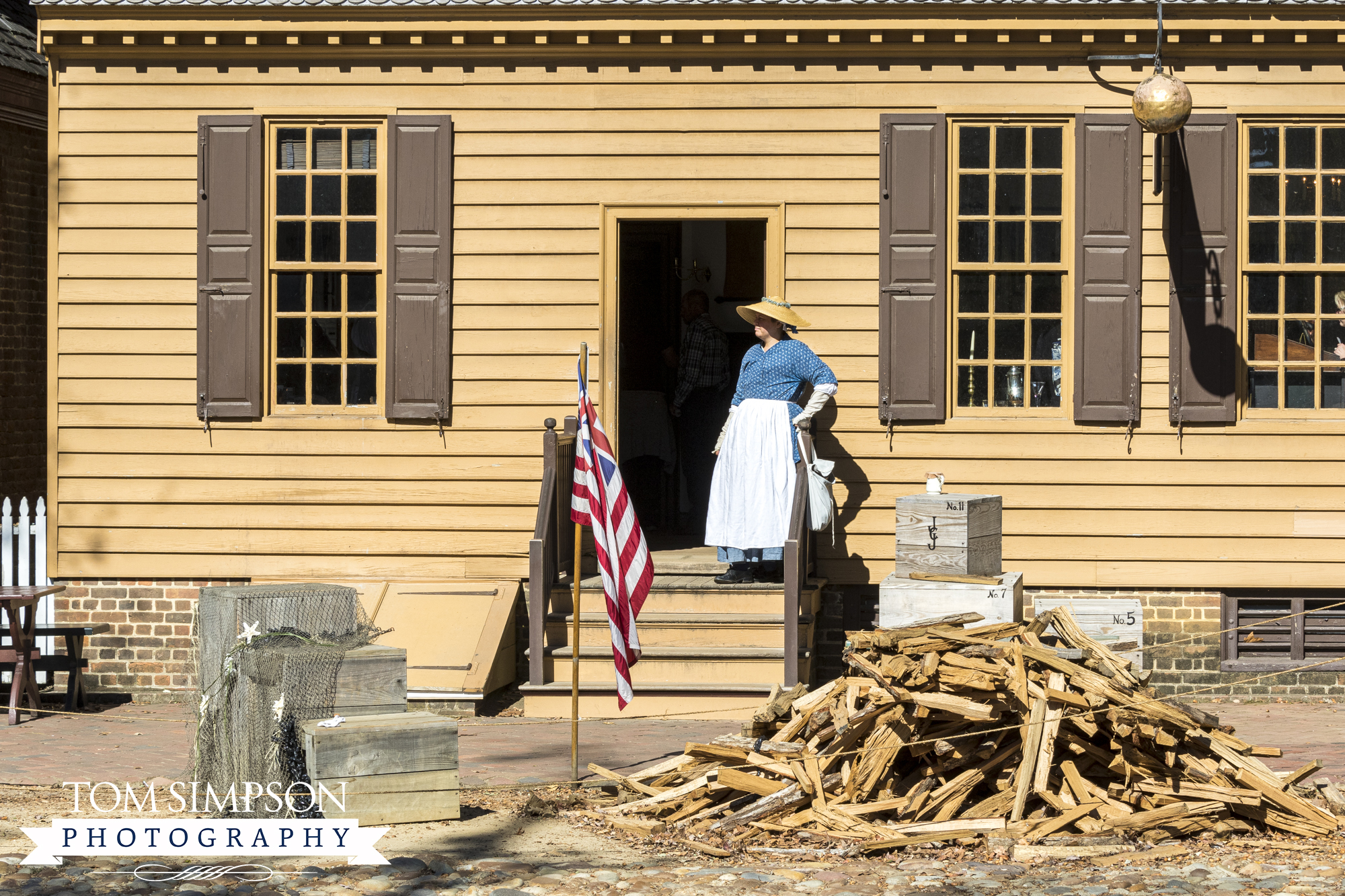
View of the James Craig Jeweler shop, otherwise known as “The Golden Ball”—which was a trademark symbol used by colonial jewelers and goldsmiths.
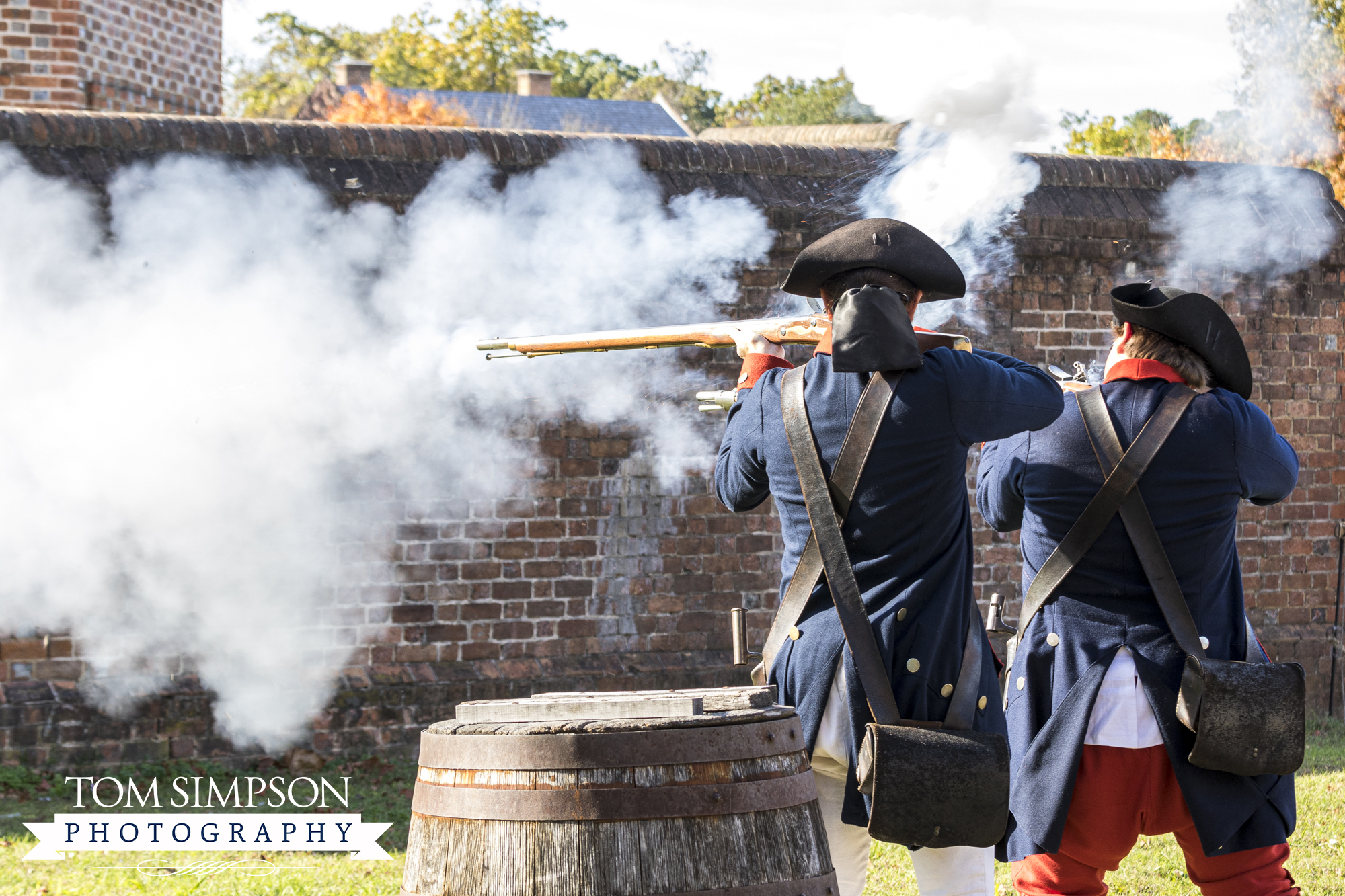
Watch a musket firing demonstration by guides in colonial military clothing.
Watch and Listen to Sights and Sounds
Second, many free activities happen throughout the day so keep your eyes open. If you see a crowd gathering, stop to see why. Here are 3 daily activities we were able to watch and listen to:
Musket Firing Demonstration
The unique shape of the Magazine is enough to catch your eye. The 8-sided building, built in 1714, was the repository for everything a soldier needed in battle.
We noticed a crowd gathering outside the Magazine wall and arrived just in time to see a musket firing demonstration. Interpreters were in military uniforms of the day. It was loud with lots of smoke but so cool to see.
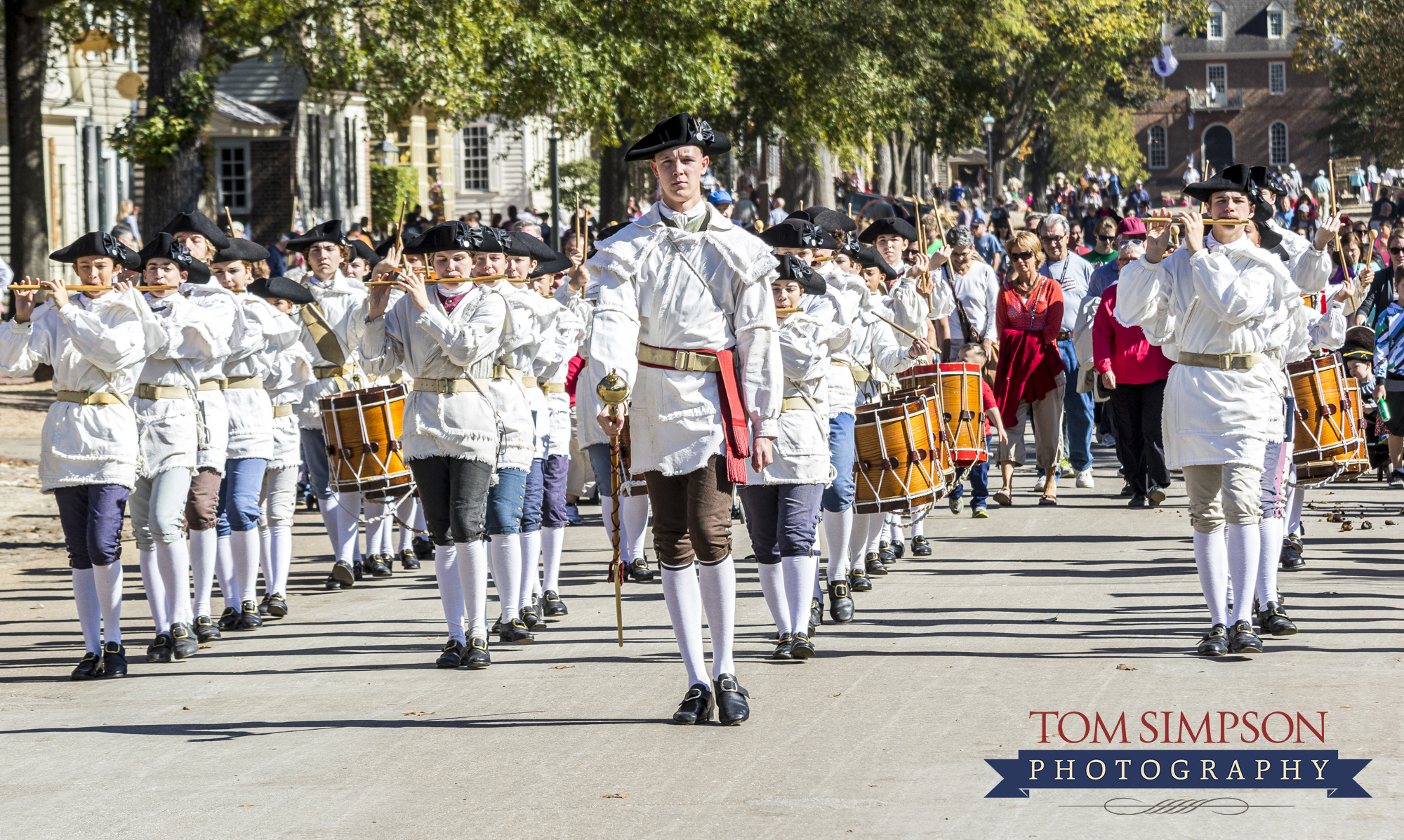
Visitors are welcome to join along, walking behind the Corps, during the Fifes and Drums parade on Duke of Gloucester Street.
The Fife and Drum Corps, consisting of local youth ages 10-18, demonstrates music and drill of an 18th century soldier. You find this free event on the Market Square, behind the Courthouse
We didn’t get to watch the drill but we did see the parade down the Duke of Gloucester Street. It's a sight to behold! The sound of shrill fifes and booming drums will stop you in your tracks. Read more about this unique group of youth HERE.
Take part in a public auction
Bid on items from CW store
Check calendar for dates
Watch sheep, horses,
chicken, and oxen
(but don't feed the animals).
Ask those in colonial attire lots of questions. They are passionate and knowledgeable about CW.
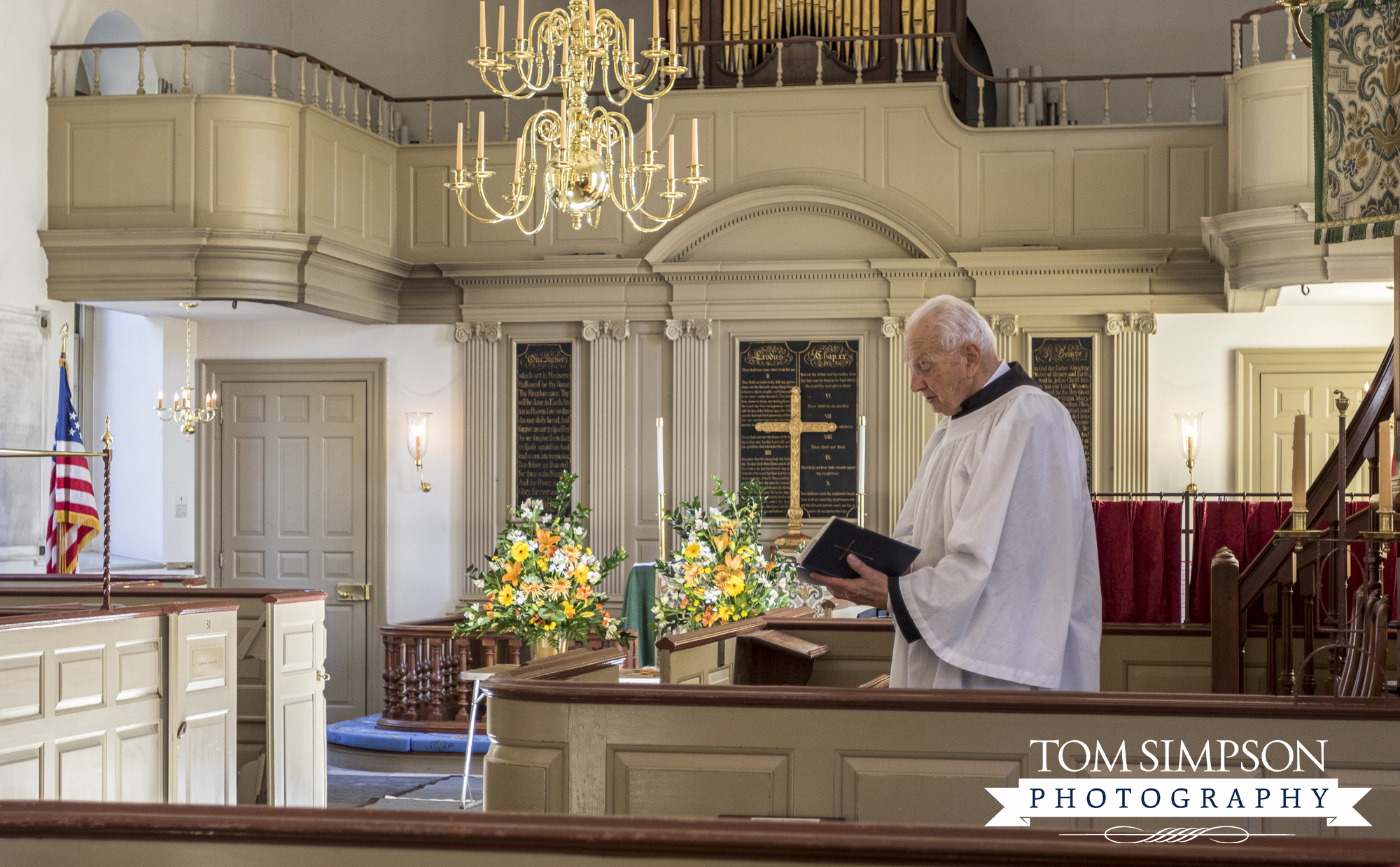
Our visit to Bruton Parish included a 20-minute service as well as view of the historic interiors.
Bruton Parish
Bruton Parish is a commanding landmark with its towering steeple. Built in 1677, the active Episcopal Church regularly holds services and organ concerts. We happened by just before one of their daily services.
Both the grounds, including the cemetery, and the building are open to the public. Inside are pews where colonial notables sat as well as special seating for the Governor.
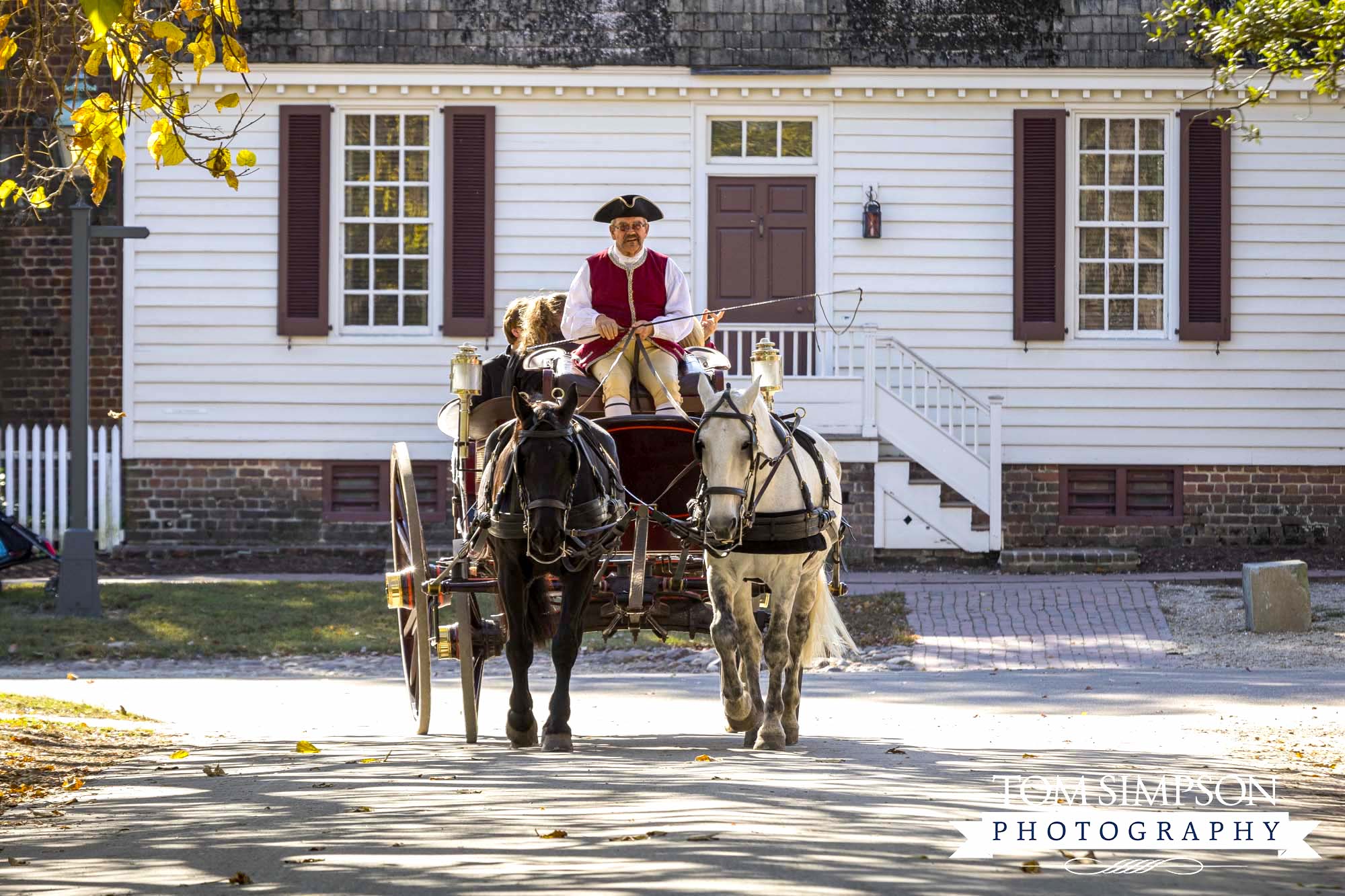
See the historic area by horse-drawn carriage.
Ride, Shop, and Eat
Third, the next few things to do may cost you a few dollars, however, you don’t need a CW admission ticket to enjoy.
Carriage Rides
Horse-drawn carriages are part of the Williamsburg experience. Watch as the handsome horses pulling elegant carriages drive past. Or you can pay the fee and take a leisurely ride through the Historic Area. Either way, it’s a win.
If you plan to ride, get your tickets early on the day of your ride. They sell out fast. FYI, the drivers are not tour guides but will point out a few things as you drive by.
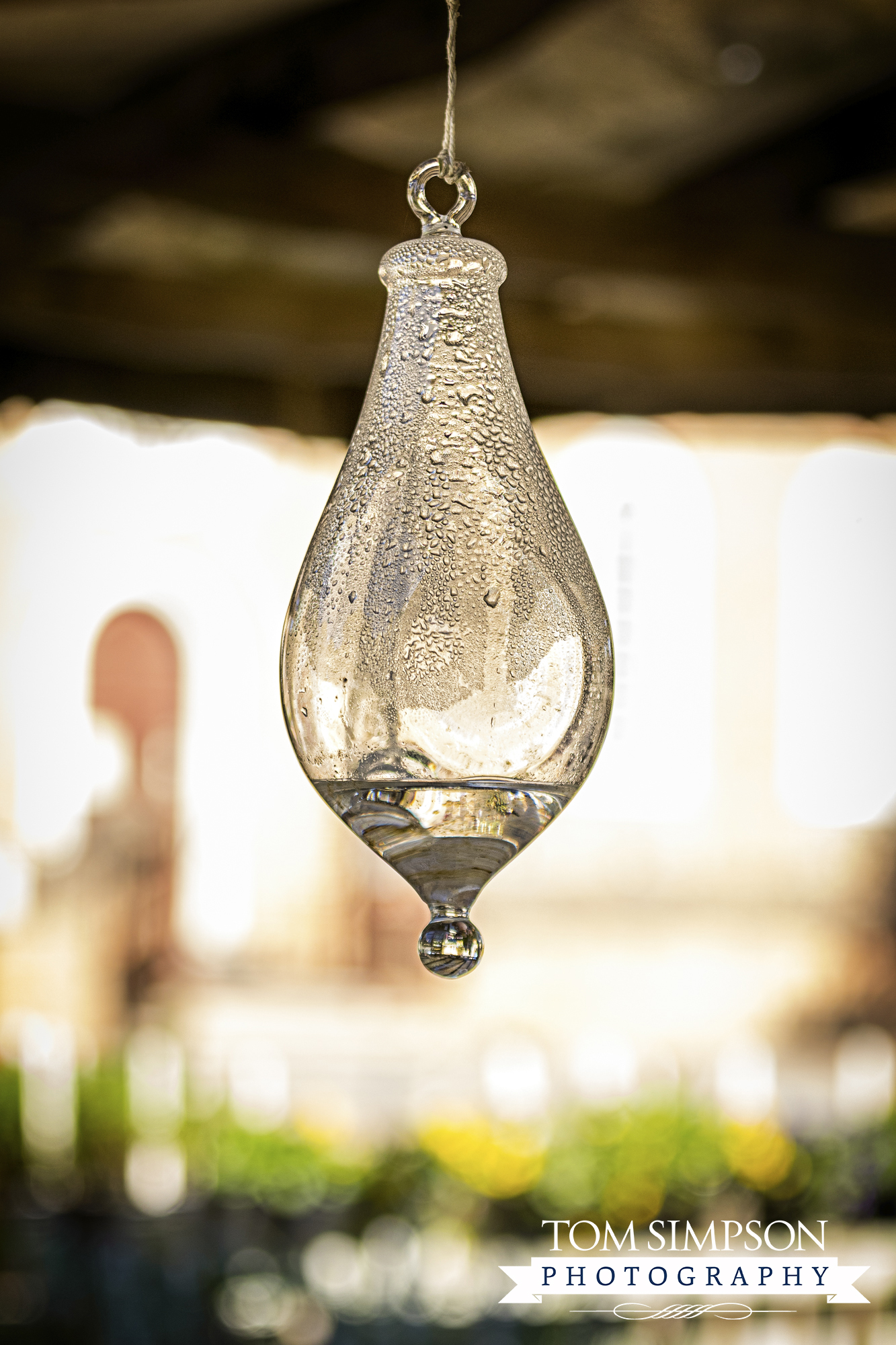
Glass weather barometer hangs in the Market Street Souvenir Shop.
Shop the Shops
Colonial Williamsburg has a wide variety of shops. Many carry unique historic items handmade by CW tradespeople. You can find home decor, both indoor and outdoor, plus jewelry, clothing, and gifts. Pick up a few souvenirs or just browse the shops.
I still have two souvenirs from my high school trips. One is a harpsichord music book with a marbled paper cover made in the bindery. The other is a silver bracelet (I wear daily) from the silversmith in Merchant Square.
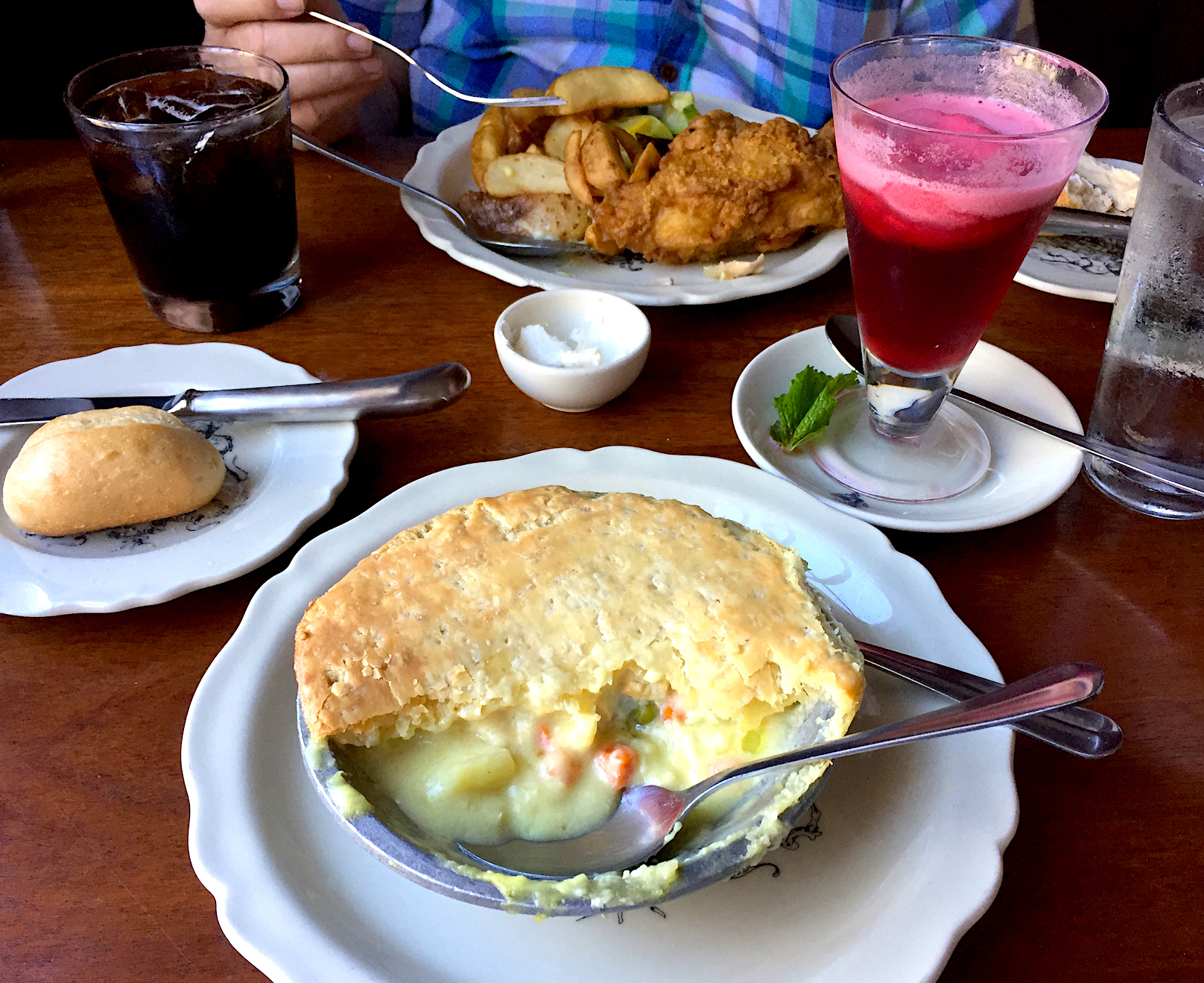
Our meal at King’s Arms Tavern was delicious!
If you want a sit-down-meal, try one of the taverns. There are a few on Duke of Gloucester Street. King’s Arms Tavern is a top favorite. We’ll talk more about this meal in a future post.
For snacks or grab-and-go, try Dubois Grocer or Raleigh Tavern Bakery. Either one is a fabulous place to pick up snacks and sweets.
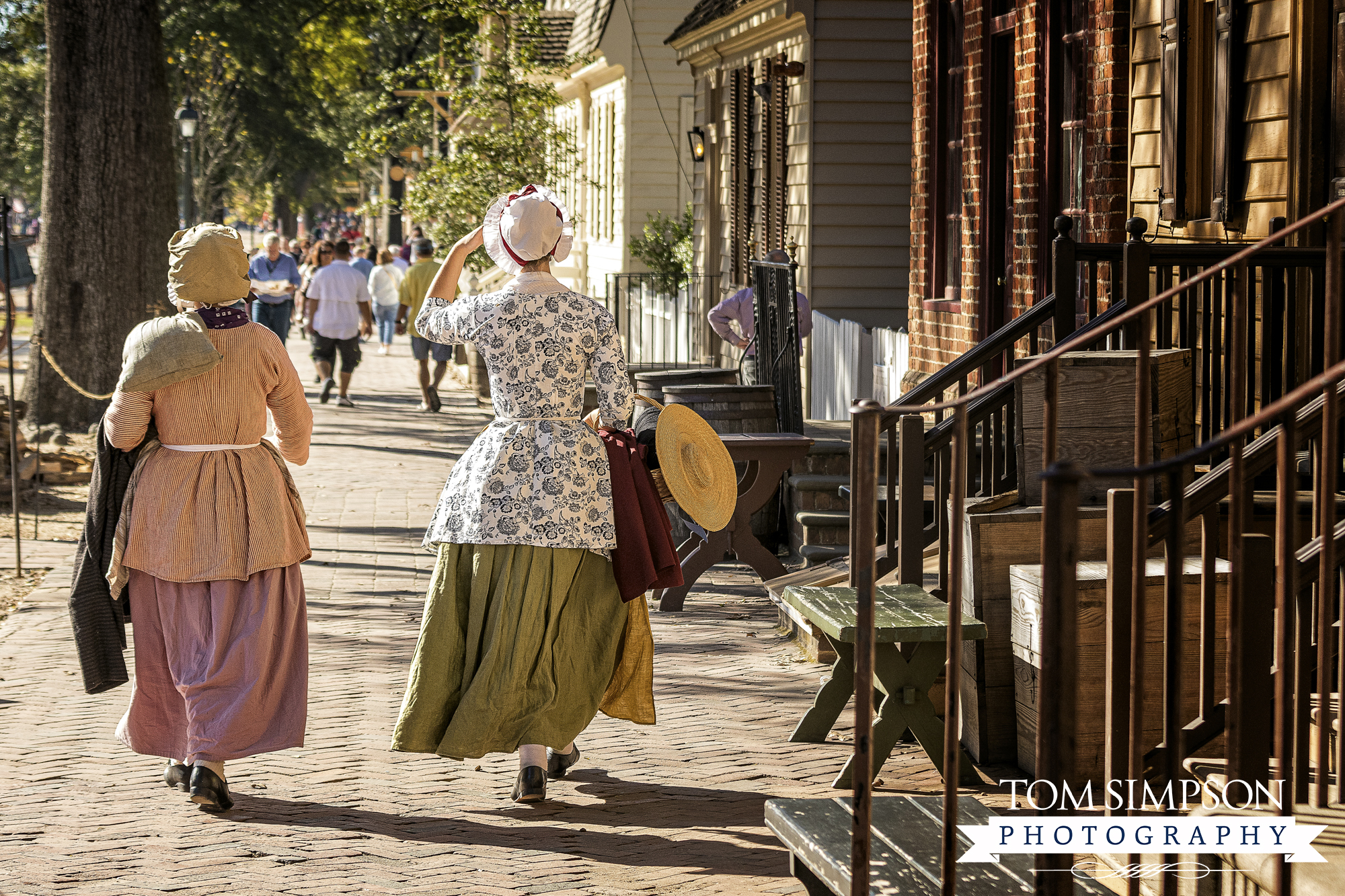
See tour guides in colonial dress as you stroll the sidewalk.
Plenty to See and Do in a Few Hours
If you only have a few hours to spend, we recommend forgoing the admission ticket and follow the plan we mentioned. You will still walk away enriched.
That said, if you want to be fully immersed in colonial history—plan at least 2-3 full days for your trip. Make it even more memorable and stay in lodging within the historic area.
Get a multi-day pass (check the special offers!!) and tour every historic home, trade shop, and government building you can. Some shops will captivate you but ALL will teach you something about the 18th century.
Either way you choose to visit Colonial Williamsburg—short or long, you will fulfill the Foundation’s mission statement: “That the future may learn from the past.”
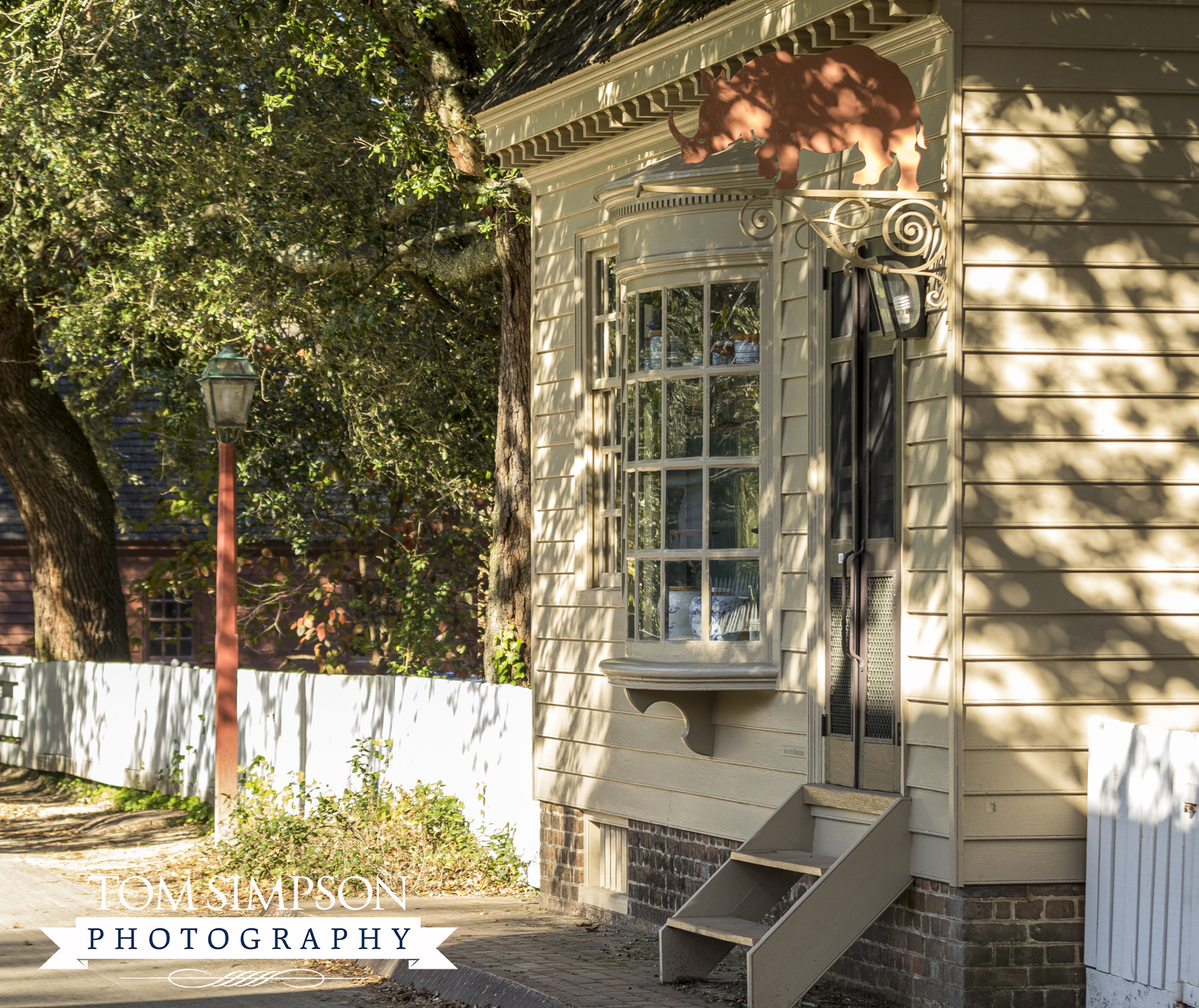
Found this shop on Colonial Street, just past Prentis Store. Fabulous architectural details for such a small shop.
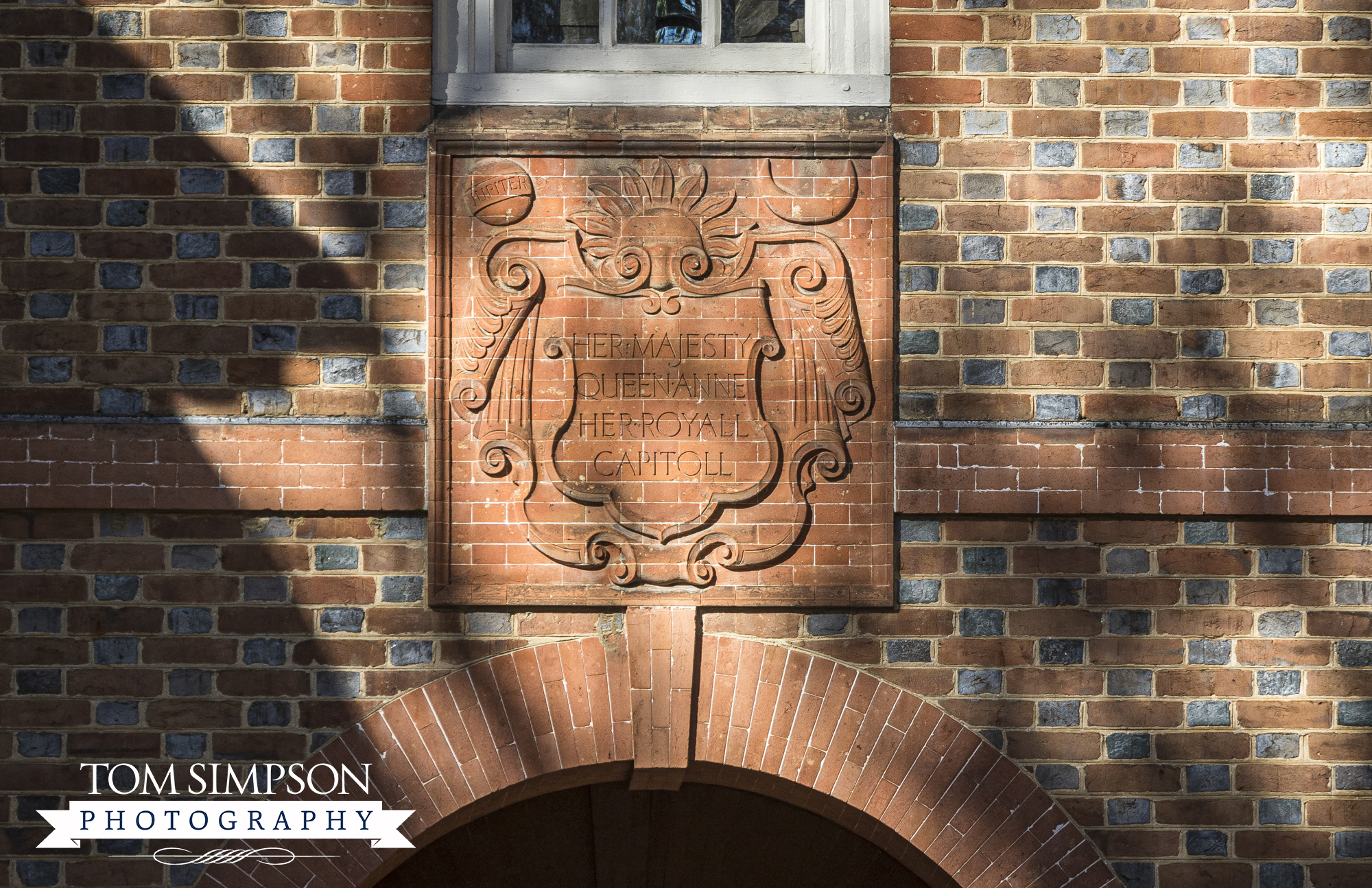
Engraved tablet over the center arch in the Capitol piazza.
A Brief Colonial Williamsburg History
- 1693 – College of William and Mary founded.
- 1699 – Became the Virginia Colony capital; named Williamsburg in honor of England’s reigning king. One of America’s 1st planned cities; layout supervised by Governor Francis Nicholson.
- 1705 – 1st Capitol Building completed
- 1747 – Capitol destroyed by fire and rebuilt
- 1773 – First mental health hospital in America established in Williamsburg
- 1780 – Virginia capital moved to Richmond; growth declined and the area slowly fell into disrepair.
- 1926 – Reverend Dr. William Archer Rutherford Goodwin, (Rector of Bruton Parish) share his vision of a restored Williamsburg with J.D. Rockefeller, Jr. Their shared idea was restoration plus recreating and interpreting 1700’s life in Colonial Williamsburg when it served as the Capital. The Colonial Williamsburg Foundation was founded. Ludwell-Paradise House was the 1st property purchased.
- 1935 – first carriage began to travel the streets.
- Colonial Williamsburg is not only the largest outdoor living museum, but it’s also the largest American history museum in the world. It encompasses 301-acres of the original town and includes 89 original buildings. Restoration is ongoing.
Looking for more small towns to explore?
Check out our "Destinations" page for other Worthy Detour stops.
